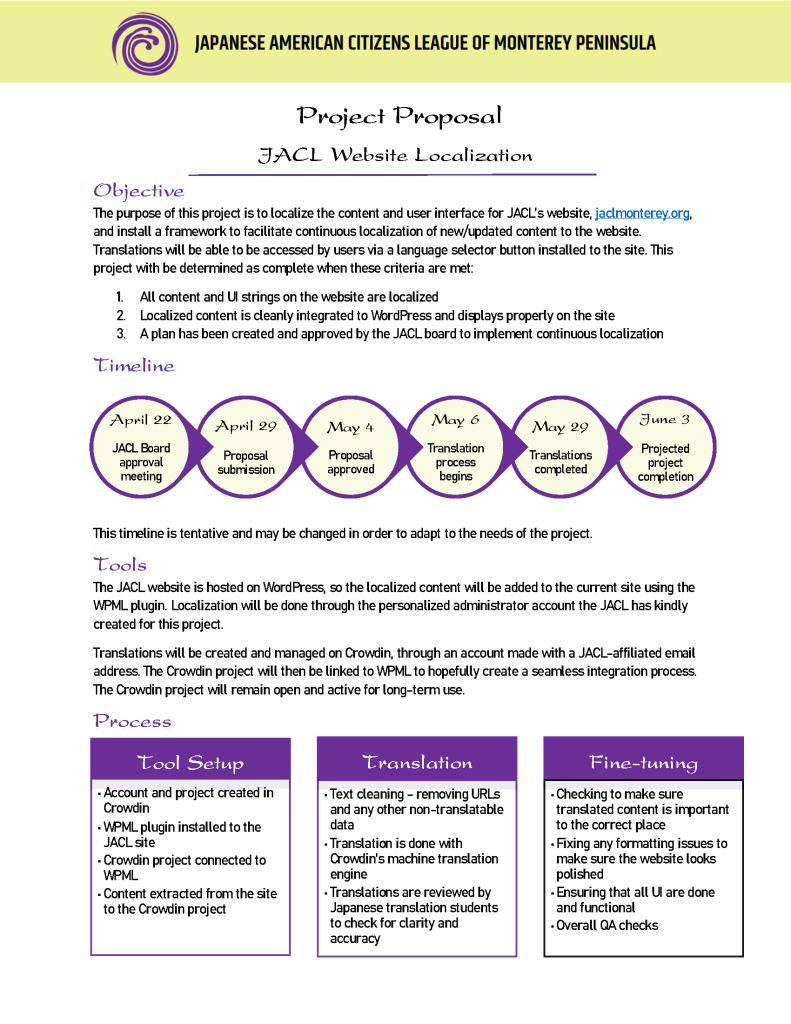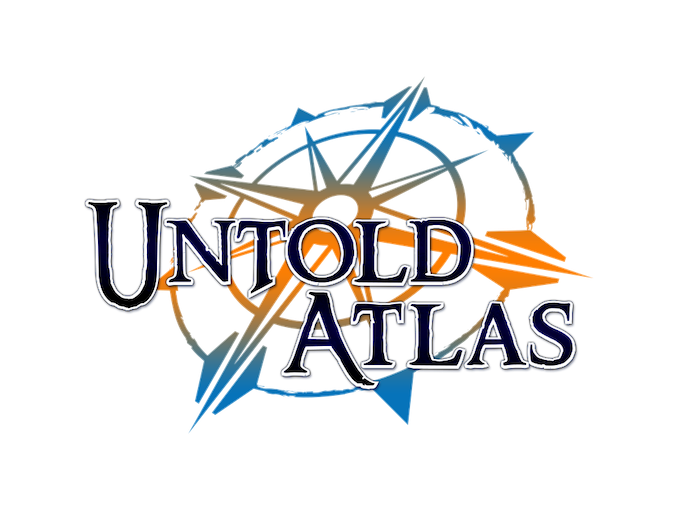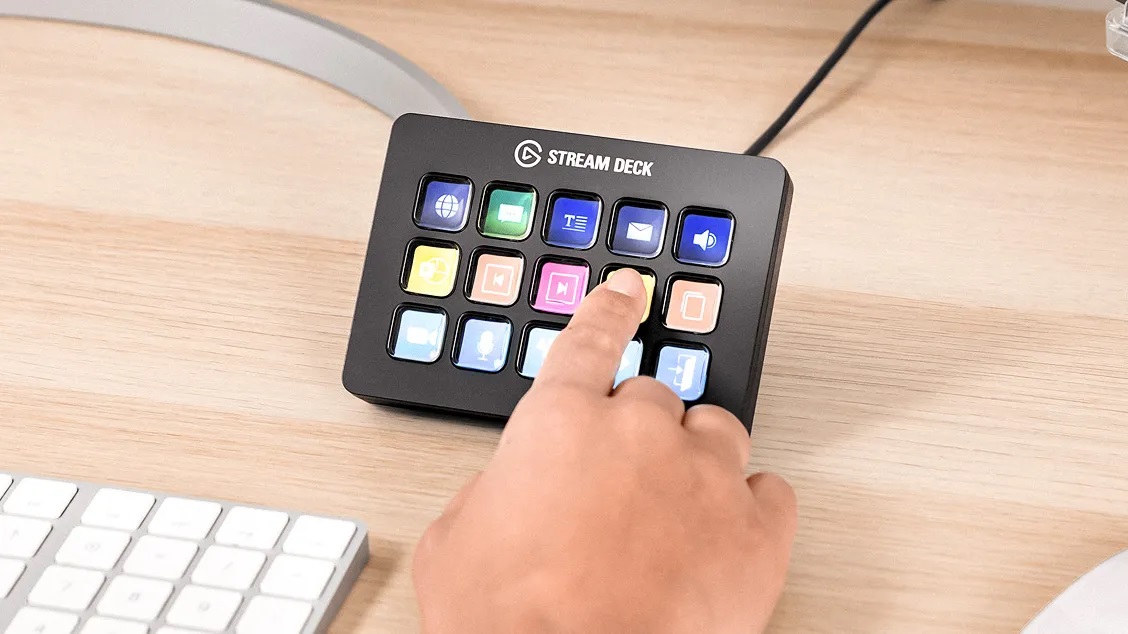The Monterey chapter of the Japanese American Citizens League (JACL) works to preserve and share the history of Japanese communities in the area. The JACL has done extensive research into Monterey’s Japanese heritage, and now have opened a local museum and created a documentary about the Monterey Peninsula’s response to Japanese internment. While I was thinking of ways to showcase my website localization skills, I realized that all of the JACL’s incredible work was not available to a Japanese speaking audience. I approached the JACL Board with an offer to localize their website, and this project developed from there.
Project Overview
Client Meetings
Since I was the one who proposed the project, I first needed to get the client on board. They were intrigued at the idea of having their website available in Japanese, but had no idea what localization really was or what was needed to make this project happen. I shared a brief overview of what I wanted to do over email, then attended a board meeting to discuss the project more in-depth and answer their questions.
The most prominent concerns the board had were these:
- Longevity – what would happen when new content was added to the website, or what would happen once I graduated from MIIS and may no longer be available to be the project manager
- Cost
- Access – in order to make the project work they would have to give me, a relative stranger, complete administrative access to their website
Luckily, because the JACL is a non-profit organization, I was able to assuage these concerns by working with Max Troyer to establish them as a client for MIIS’s Globe Multilingual Services (GMS) program. This way, I would be able to use MIIS licenses for translation management systems, connectors, and CAT tools at no cost to the JACL. Adding them as a client also means that this project will be available for future students to work on after I graduate, guaranteeing the longevity of the JACL’s localized site.
Proposal
The JACL Board requested I submit a proposal to them outlining what the localization process and expected timeline would look like. Creating this document also helped me practice how to communicate with clients who are unfamiliar with localization and make sure that they are comfortable with what I plan to do using their assets.


Project Set-up
After the JACL Board approved my proposal, my first major decision was what translation management system (TMS) I would use for the project. Since Globe Multilingual Services had a license for it, and I wanted to recruit Japanese translators to collaborate with me on the project, I chose Crowdin. Crowdin is built as a translation crowdsourcing platform, but also has a wide variety of integrations/connectors and other services available. This would make it easy to add volunteer translators to the project and find a way to tie the TMS to the JACL’s website.
Since the JACL website is hosted on WordPress, I also decided to use WPML to extract strings for translation and re-integrate the translated strings. Luckily, Crowdin had an integration for WPML already built in, and setting up WPML and connecting it to the Crowdin project was fairly simple. There was even a convenient step-by-step guide for exactly what I needed. After setting up the Crowdin project and connecting it to the website, I was able to send batches of translation strings from WordPress to Crowdin. The next step was to recruit translators to work on the project.

Translator Recruitment
In order to recruit translators to work on the project, I worked with the head of the Japanese translation program at MIIS to share information about the JACL and what I was trying to do. I am also working with the JACL board to recruit volunteer translators from the Japanese-American community. I have already received several volunteers, including a professional translator who I have asked to manage linguistic quality assurance (LQA) for the project.

Future Plans
This project is intended to be a long-term commitment to localizing the JACL’s assets. From here on out, I will be managing translators as they contribute, ensuring that translated strings are smoothly exported and integrated to the WordPress site, communicating with the JACL board and community, and planning for complete localization – including their secondary website for their documentary and trailer. My hope is that this project will help to establish a relationship between the MIIS community and the JACL where future students can continue to localize material for the JACL as they update and add to their website.



